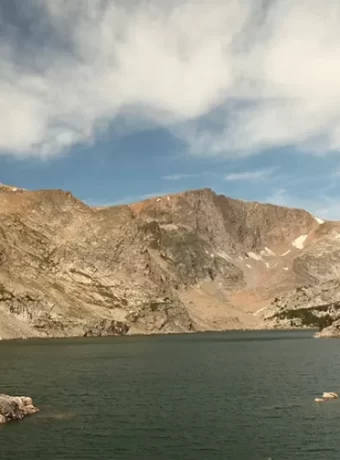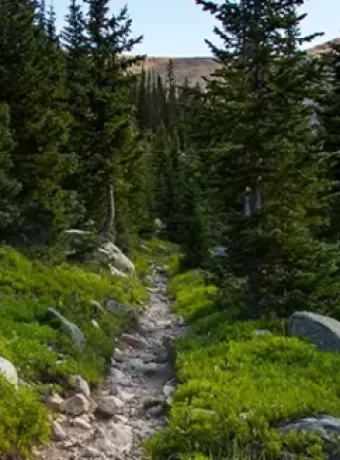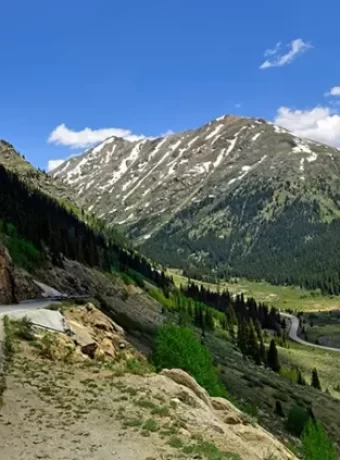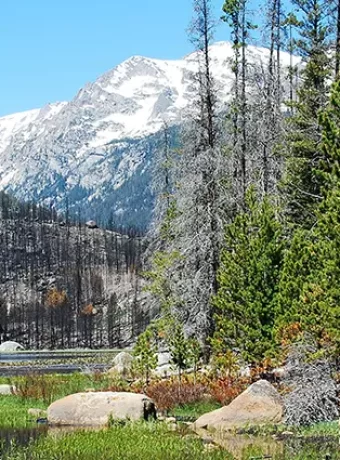Seeley-Swan Valley: Montana’s Hidden Gem for Hiking, Camping, and Fly Fishing
Nestled between the majestic Mission and Swan mountain ranges, the Seeley-Swan Valley in Montana is a paradise for outdoor enthusiasts. This picturesque valley, often overlooked by travelers rushing to more famous destinations like Glacier National Park, offers a unique blend of natural beauty, rich history, and unparalleled recreational opportunities. Whether you’re drawn to the serene lakes, the rugged hiking trails, or the world-class fly fishing spots, the Seeley-Swan Valley promises an unforgettable experience for nature lovers and adventure seekers alike.
In this comprehensive guide, we’ll take you on a journey through the valley’s fascinating past, from its Native American roots to its development as a premier destination for outdoor recreation. We’ll explore the best hiking trails in Montana that showcase the area’s breathtaking landscapes, from cascading waterfalls to ancient forests. For anglers, we’ve compiled a list of the top ten fishing locations in the Seeley-Swan Valley, including must-visit spots like Shay Lake and Clearwater Lake. And for those passionate about fly fishing, we’ll delve into the secrets of the Swan River, a hidden gem for catching native Montana trout.
Whether you’re planning your first visit or you’re a seasoned explorer of the valley, this article will provide you with all the information you need to make the most of your time in this stunning corner of Montana. So, lace up your hiking boots, grab your fishing gear, and get ready to discover why the Seeley-Swan Valley is a must-visit destination for anyone seeking the best of Montana’s wilderness. The Swan Valley is as much as I hate to tag a favorite, this is it. I have slept under trees in the fall sun and float fly fishing past black bears feeding on choke cherries along the bank. Taken hikes with a grizzly as a companion for a few miles at my side.
Table of Contents
Echoes of the Past: History of the Seeley-Swan
The story of this river valley stretches back much further than highways and cabins. Long before anyone else arrived, the Salish and Kootenai people called this place home. They lived here for centuries, understanding the rhythms of the land that would shape western Montana.
Imagine relying entirely on what the valley gave. The lakes, like Seeley Lake and Swan Lake, offered abundant fly fishing opportunities. The forests were full of game like deer and elk, while plants gave food and medicine, making wildlife watching a part of daily life.
This deep connection to the land shaped the valley’s character. You can still feel that respect for nature today, thanks partly to strong conservation efforts. It’s a legacy woven into the fabric of the place, evident in the nearby wildlife refuge areas.
European explorers and fur trappers arrived later, starting in the early 1800s. While famous expeditions explored parts of Montana, others followed, drawn by the wilderness and the potential for trapping beaver. Their presence began to subtly shape western culture in the region.
These early visitors were struck by the valley’s raw beauty. They saw the same Mission Mountains and clear waters that draw people today. Their journeys opened the door for others to follow into this part of Montana’s Glacier Country.
By the late 19th century, settlers started claiming land through the Homestead Act. Small communities like Seeley Lake and Condon began to grow, supported by guest ranches and homesteads. Life was tough, with harsh winters and remote locations testing everyone’s grit.
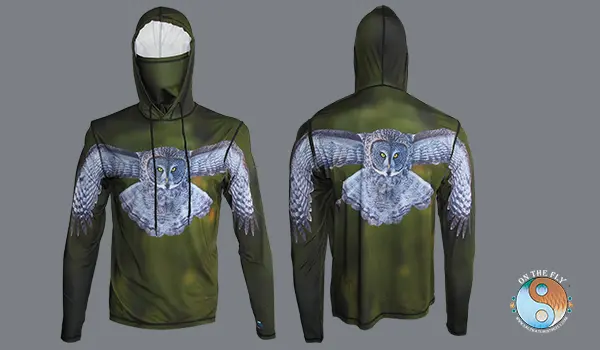
Farming, ranching, and logging became important economic drivers. The thick forests supplied timber needed for building homes and businesses throughout western Montana. These early settlers built the tight-knit communities that still exist.
A major change came when Montana Highway 83 was built in the 1950s. This scenic drive, running 91 miles north-south, connected the valley like never before. Suddenly, this hidden gem within Glacier Country was accessible.
Tourism started to bloom as people discovered the hiking, fly fishing, and camping opportunities. The valley became known as a gateway to adventure. Its closeness to places like Glacier National Park and the Flathead Valley helped draw visitors exploring western Montana’s Glacier Country.
Today, there’s a strong focus on protecting this special place. Huge areas like the Bob Marshall Wilderness Complex border the valley, keeping vast lands wild. The Swan River National Wildlife Refuge helps protect vital wetlands and homes for birds and other animals, contributing to the Glacier Untold story of conservation.
As you explore, you’re walking through layers of history. It’s a story shaped by nature, Native American culture, determined settlers, and modern efforts to keep it wild, all contributing to the distinct identity of this montana region.
Hit the Trails: Best Hiking in the Valley
If you love hiking, you’ve found your spot. The Seeley-Swan Valley offers trails for every kind of hiker, rivaling areas near Glacier Park. You can find easy lakeside walks or tough mountain climbs within this recreation area.
These paths wind through forests, past waterfalls, and up to incredible viewpoints. Ready to explore some of the best? Let’s look at a few favorites, including trails near Salmon Lake.
Holland Lake Trail & Falls
This is a popular choice, and for good reason. It’s about 3 miles round trip and considered easy to moderate, making it great for family fun. The trailhead is near Holland Lake Campground, north of Seeley Lake.
You’ll walk along the beautiful shore of Holland Lake through pine and fir trees. The Mission Mountains reflect perfectly in the clear water. The main attraction is Holland Falls, tumbling about 50 feet into the lake.
The path to the falls has some gentle switchbacks but is generally well-kept. It’s great for families or a relaxed afternoon hike. The best time is late spring through fall, especially when the waterfall is strong after snowmelt.
Morrell Falls National Recreation Trail
Looking for a stunning waterfall without a hard climb? Try the Morrell Falls Trail. This easy 5.4-mile round trip hike has very little elevation gain, perfect for a leisurely day.
You start near Seeley Lake and walk through forests and meadows along Morrell Creek. Keep an eye out for wildlife watching opportunities. The reward is the impressive 90-foot Morrell Falls, especially powerful in spring.
Because it’s mostly flat, this trail is perfect for beginners and families exploring Montana’s Glacier Country. Go in spring or early summer for the best waterfall views and wildflowers. Be prepared for mud if it has rained recently.
Pyramid Pass Trail
Ready for a challenge and want a taste of true wilderness near the Swan Range? The Pyramid Pass Trail might be for you. This is a tougher hike, around 10.4 miles round trip with about 1,800 feet of elevation gain.
This trail climbs into the Bob Marshall Wilderness, one of the country’s largest roadless areas. You’ll trek through forests and high meadows, crossing streams along the way. The views from the pass over the Swan Range are spectacular.
This hike offers real solitude but needs preparation. Hike it in summer or early fall when snow-free. Pack water, snacks, bear spray, and check the weather – mountain conditions change fast.
Clearwater Canoe Trail Loop
How about a hike combined with paddling? The Clearwater Canoe Trail offers just that, showcasing diverse water activities. There’s an easy 1.5-mile hiking loop along the Clearwater River.
The trail takes you through lodgepole pine forests. You might spot eagles or osprey hunting over the water during your wildlife viewing. If you bring a canoe or kayak, you can also paddle the calm 3.5-mile river section for great mountain views.
This spot is wonderful for a peaceful outing, especially if you enjoy photography or birdwatching. Summer is ideal if you plan to paddle. Remember bug spray, particularly near the water.
Girard Larch Grove Trail
For something short and magical, visit the Girard Larch Grove. This easy 1-mile loop winds through ancient western larch trees. You can even meet “Gus,” a giant larch estimated to be 1,000 years old.
The trail is flat and peaceful, great for all ages and accessible year-round. It’s especially stunning when you explore fall, usually late September or early October. The larch needles turn a brilliant gold, creating an unforgettable scene that highlights why fall is special in Western Montana.
This is also a lovely spot for birding year-round. It’s a simple walk that connects you to the valley’s ancient forests. Consider packing a picnic to enjoy among the giants.
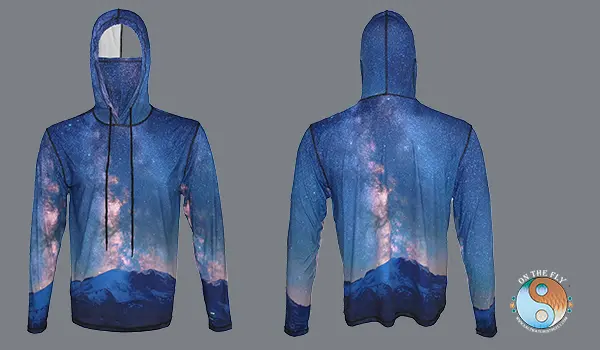
Other Hiking Considerations
Beyond these highlights, numerous trails spiderweb through the Mission Mountains and the Swan Range. Areas like the Jewel Basin Hiking Area, a bit north, offer more challenging alpine routes. Always carry bear spray and know how to use it; this is prime grizzly country. Not to alarm but be aware, over a decade of half a year every year in the Seely-Swan Valley, Jewel Basin, Hungary Horse & Glacier. Seely-Swan and Hungary Horse is where I walked with the most bears within 30 yards. The Jewel Basin is a Jewel with great weekend backpacking opportunities.
Check trail conditions before heading out, especially early or late season when snow can linger at higher elevations. Local visitor centers or ranger stations can provide current updates. Remember to practice Leave No Trace principles to protect this beautiful environment.
Hiking Safety Checklist
- Bear Spray (and knowledge of how to use it).
- Water (more than you think you need).
- Snacks/Food.
- Map and Compass/GPS (don’t rely solely on phones).
- First-Aid Kit.
- Sunscreen and Hat.
- Insect Repellent.
- Layers of Clothing (weather changes quickly).
- Rain Gear.
- Headlamp or Flashlight.
- Let someone know your hiking plans and expected return time.
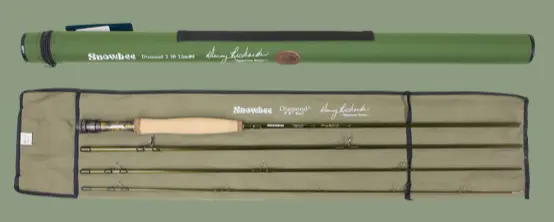
Fishing Spots in the Seeley-Swan Valley Montana
Anglers, get ready for some excellent fishing. The lakes and rivers here are brimming with fish. Glacially carved lakes reflect the sky, and cool rivers flow through forests – it’s picture-perfect fishing in Western Montana’s Glacier Country.
You can fish from shore, troll from a boat, or wade into a clear stream. Let’s check out ten top spots to try your luck, including local favorites Shay Lake and Clearwater Lake. Remember to get your Montana fishing license first, available online or from local vendors.
Seeley Lake
This large lake is a hub of activity and central to the Seeley-Swan Valley experience. You can find bass, rainbow trout, perch, kokanee salmon, and even northern pike. Montana Fish, Wildlife & Parks stocks it regularly, ensuring good opportunities.
With over 1,000 acres, there’s plenty of room for various water activities. Boat ramps and fishing piers make access easy. Try spring or fall for trout, summer for bass and pike action.
Salmon Lake
Just south of Seeley Lake, Salmon Lake offers great trout fishing opportunities. Find rainbow and cutthroat trout, plus kokanee and pike. It covers about 600 acres, nestled beautifully in the landscape. A state park provides camping and access, making it ideal for a multi-day trip. The clear water and forest surroundings make it beautiful. Fish near the inlet from Seeley Lake for potentially more action.
Lake Inez
Looking for something quieter? Lake Inez is smaller (around 300 acres) and feels more secluded than its neighbors. It’s good for rainbow trout and kokanee salmon.
Fewer crowds mean a peaceful day on the water. Use a small boat or float tube to reach deeper spots where fish might hold. Fish near the outlet if you’re casting from shore.
Clearwater Lake
This one is a fly fisher’s dream near the Clearwater River. Known for incredibly clear water, it holds westslope cutthroat and brook trout. Motorized boats are not allowed, keeping it serene and preserving the habitat.
Paddle out in a float tube or canoe for the best access. Summer is prime time, especially during insect hatches when dry fly action can be excellent. You’ll need stealth due to the clear water, making presentation crucial.
Shay Lake
A true hidden gem for those willing to explore. Shay Lake needs a short hike to reach, keeping it tranquil and less pressured. This small, high-elevation lake near Condon is stocked with rainbow and cutthroat trout. I use to guide on this lake every year. My clients landed a few grayling over the years. Nothing big, but still cool.
The hike is relatively easy, leading to peaceful surroundings perfect for escaping crowds. Shore fishing works well near streams flowing in or out. Remember to pack out everything you pack in, adhering to Leave No Trace ethics.
Swan River
This river is legendary among fly fishers in Montana’s Glacier Country. It flows the length of the valley with plenty of access points along the scenic drive. Expect cutthroat, rainbow, and protected bull trout (catch-and-release only).
Wading is often easy on its gravel bottom, especially in the upper reaches. Match your flies to the season – stoneflies early, terrestrials later. Respect regulations regarding bull trout; knowing identification is important.
Clearwater River
Flowing into Seeley Lake, this river is great for wading and easily accessible. Find brown and rainbow trout in its riffles and pools. Access is easy from Highway 83 pullouts or near the Clearwater Canoe Trail.
Fly anglers love targeting the undercut banks and deeper pools where larger fish hide. Try nymphs or streamers for consistent results. Early mornings can be particularly good for targeting wary brown trout.
Holland Lake
Combine fishing with stunning scenery near Holland Falls and the imposing Mission Mountain backdrop. This 400-acre lake has kokanee salmon and rainbow trout. Protected bull trout also live here, so handle with care if encountered.
A campground and boat ramp make it convenient for anglers and boaters. Troll for kokanee in deeper water or cast near the shore for trout. Check ramp conditions early in the season as lake levels fluctuate.
Placid Lake
Located at the valley’s southern end, this large lake (1,300 acres) offers calm waters, often less windy than others. Fish for native trout, kokanee salmon, and largemouth bass. Camping facilities are available at the state park.
It’s a good spot for a weekend fishing trip combined with other family fun. Try targeting bass near weed beds during warmer months. Kayaks or canoes open up more fishing water and quieter bays.
Lake Alva
Easy access directly off Highway 83 makes Lake Alva a convenient choice for a quick fishing session. This 300-acre lake has rainbow trout and kokanee salmon. A boat ramp and picnic spots are on site.
It’s a reliable spot if other popular lakes are busy. Troll deeper areas for kokanee using downriggers or leaded line. Cast spinners or bait from shore for stocked rainbow trout.
Fly Fishing the Swan River
For many anglers, the Swan River represents Montana fly fishing at its best. The stretch from Cold Creek north towards Swan Lake is particularly special. It offers clear, wadable water and plenty of hungry trout within Western Montana’s Glacier Country. I still feel the tug of the current, song of a near by kingfisher. I very special place.
Imagine casting a fly line under the watchful gaze of the Swan Mountains, a part of the scenic drive experience. The river here averages 50 to 100 feet wide. You’ll find a mix of fast riffles, smooth runs, and deep pools where fish love to hide. If you are going to float, talk with the locals. The Swan has a few widow makers and I suggests you are proficient on the oars. ( i know great English) In September I have floated past several black bears feeding on ripe choke cherries.
The water stays cold thanks to mountain springs and snowmelt feeding this pristine river valley. This clarity helps you spot fish, but it also means the fish can spot you. Stealthy approaches and careful wading are important here.
What You’ll Catch
The main stars are native westslope cutthroat trout and feisty rainbow trout. These fish typically range from 8 to 12 inches, but larger specimens lurk in deeper spots or logjams. Cutthroat are known for their willingness to rise for a well-presented dry fly.
You might also encounter bull trout, a threatened species native to these waters. They grow much larger but are strictly catch-and-release; targeting them is illegal. Know how to identify them (lack of distinct spots on the dorsal fin, pale body spots) and handle them gently if caught accidentally. Montana FWP regulations are clear on protecting these fish.
Flies and Techniques
Success often comes down to matching the hatch or prevailing food sources. In early summer (June, July), stoneflies are key, particularly Golden Stones and Salmonflies lower down. Use large dry patterns like Chubby Chernobyls, Stimulators, or Sofa Pillows.
Later in summer (August, September), switch to terrestrials like grasshoppers, ants, and beetles as insects become more active along the banks. Don’t forget attractor dry flies like Parachute Adams or Elk Hair Caddis during general hatches. Nymphs like Pheasant Tails, Prince Nymphs, or Hare’s Ears work well year-round, especially dropped below a dry fly.
Streamers like Woolly Buggers or Sculpzillas can attract bigger fish hunting baitfish, particularly in deeper pools or near structure. The river banks can be brushy, making casting tricky sometimes. Practice roll casts and short, accurate presentations for success near cover.
Gear and Approach
A 9-foot, 4- or 5-weight fly rod is usually ideal for the Swan River. Use a floating line for most situations. Light tippets (4X to 6X) are generally needed for delicate dry fly presentations due to the clear water.
Fish early mornings or late evenings for the best activity, especially during warmer summer weather. Focus on riffles and feeding lanes during hatches, and probe deeper, shaded pools or undercut banks when it’s hot or bright. Wading is generally straightforward with a gravel bottom, but bring a wading staff for stability on slippery rocks.
Finding Access
Public access gets better north of Cold Creek along Highway 83. Look for designated Fishing Access Sites (FAS) and pullouts between Cold Creek and the town of Swan Lake. The Cold Creek Bridge area itself is a popular starting point.
The Swan River National Wildlife Refuge near the northern end offers excellent access and protects crucial habitat. You can park and walk to the river from designated points. This area features slower water, wetlands, and fantastic wildlife viewing opportunities alongside fishing.
Always respect private property signs and stay within designated access corridors or below the high-water mark. Pack out everything you pack in, including waste fishing line. Following these practices helps keep the Swan River pristine for future generations.
Getting Help
New to the river or fly fishing? Consider hiring local tour operators or guides. Outfitters like Swan Mountain Outfitters offer guided trips tailored to your skill level. They provide gear, invaluable local knowledge, instruction, and handle logistics, greatly enhancing your experience.
Fly shops in Seeley Lake or nearby towns like Missoula can also offer great advice on current conditions, hot flies, and access points. Investing in local knowledge can significantly shorten the learning curve and help you find the best spots on this beautiful river. Using resources from the Glacier Country tourism region can also be helpful.
National Forest and BLM Campgrounds in the Seeley-Swan Valley
For visitors looking to fully experience the natural beauty of the Seeley-Swan Valley in Montana, camping is an ideal way to stay immersed in the area’s stunning landscapes. The valley offers several developed campgrounds managed by the U.S. Forest Service, located primarily within the Lolo and Flathead National Forests. These campgrounds provide essential amenities such as picnic tables, fire rings, vault toilets, and access to water, making them suitable for both tent and RV camping. Below is a comprehensive list of all Montana National Forest campgrounds in the Seeley-Swan Valley, compiled from Lolo and Flathead National Forest resources.
Lolo National Forest Campgrounds
-
Seeley Lake Campground
-
Big Larch Campground
-
Lake Alva Campground
-
Lake Inez Campground
-
River Point Campground
-
Monture Creek Campground
-
Lakeside Campground
-
Big Nelson Campground
Flathead National Forest Campgrounds
-
Swan Lake Campground
-
Holland Lake Campground
These campgrounds are particularly popular during the summer months, so it’s recommended to make reservations in advance, especially for weekends and holidays. Some campgrounds, such as Seeley Lake Campground, offer reservable sites through Recreation.gov, while others operate on a first-come, first-served basis.
BLM Campgrounds
There are no developed Bureau of Land Management (BLM) campgrounds in the Seeley-Swan Valley. However, dispersed camping is permitted on BLM lands in the area, offering a more secluded experience for those willing to forgo developed amenities. Dispersed camping is also allowed on national forest lands outside of designated campgrounds. Campers engaging in dispersed camping must follow Leave No Trace principles and adhere to regulations, such as camping at least 200 feet from water sources and packing out all trash.
Whether you seek the convenience of a developed campground or the solitude of dispersed camping, the Seeley-Swan Valley provides a variety of options for enjoying an overnight stay in this remarkable Montana wilderness. List of Montana’s National Forest Campgrounds.
Other Valley Adventures & Activities
While hiking and fishing are prime attractions, the Seeley-Swan Valley Montana offers much more. There’s adventure and relaxation around every bend of the scenic drive. Consider adding these activities to your itinerary when you start planning.
Water Activities Galore
Beyond fishing, the chain of lakes (Seeley, Salmon, Inez, Alva, Rainy, Holland) invites various water activities. Rent a pontoon boat for a leisurely cruise on Seeley Lake, or kayak the quiet coves of Lake Inez. Stand-up paddleboarding is popular on Placid Lake’s calm waters.
Canoeing the Clearwater River Canoe Trail remains a classic, peaceful experience. Many lakes have public boat launches. Check local regulations regarding boat types and speed limits, especially on smaller lakes.
Wildlife Watching Wonders
Keep your eyes peeled for abundant wildlife. Deer and elk are common, especially at dawn and dusk along forest edges. You might spot moose in marshy areas or near willow thickets.
Bald eagles and osprey frequently soar over lakes and rivers. The Swan River National Wildlife Refuge is a hotspot for birding, protecting habitat for waterfowl, songbirds, and raptors. Remember to maintain a safe distance from all wildlife, especially bears and moose.
Winter Recreation
When snow blankets the valley, a different kind of recreation emerges. Cross-country skiing trails abound, including groomed systems near Seeley Lake. Snowshoeing is another great way to explore the quiet winter landscape.
Snowmobiling is popular on designated trail systems that connect throughout western Montana. Consider guided sleigh rides offered by some local guest ranches for a charming winter experience. Nearby ski areas like Lookout Pass offer downhill options within a reasonable drive.
Local Flavor and Fun
Explore the small communities of Seeley Lake, Condon, and Swan Lake. Check out local farmers markets during the summer for fresh produce and crafts. Find a local ice cream place for a sweet treat after a day outdoors – ask around for the best cream place.
Look for schedules of live music events at local venues, especially during summer weekends. Disc golf courses offer another fun outdoor activity. Some guest ranches even offer unique experiences like llama trekking or extended horseback riding trips into the backcountry.
Exploring Nearby
The Seeley-Swan Valley is perfectly positioned for exploring more of Western Montana’s Glacier Country. Take a day trip north towards Flathead Lake, the largest freshwater lake west of the Mississippi. Head further north to explore Glacier National Park, though allow ample driving time.
Drive south towards Missoula for city amenities, museums, and access to the Bitterroot Valley. Visit the National Bison Range south of Flathead Lake for guaranteed wildlife viewing. Consider a soak in nearby hot springs for relaxation after active days.
Planning Your Seeley-Swan Visit
Ready to experience the beauty of the Seeley-Swan Valley? A little planning goes a long way. Here are some tips to help you prepare for your trip to this stunning part of western Montana.
Best Time to Visit
Summer (June-August) offers warm weather ideal for hiking, fishing, and water activities. Fall (September-October) brings fewer crowds, stunning autumn colors (especially the golden larches), and pleasant temperatures for hiking; explore fall for a unique perspective. Winter (December-March) is perfect for snow sports, while spring (April-May) sees the landscape green up, rivers swell, and waterfalls roar, though higher elevation trails may still be snowy.
Getting There and Around
The valley is accessed via Montana Highway 83, a designated scenic drive connecting Seeley Lake in the south to Swan Lake in the north. Missoula Montana Airport (MSO) is the closest major airport, about an hour’s drive south of Seeley Lake. Glacier Park International Airport (FCA) near Kalispell is about a 1.5 to 2-hour drive north of Swan Lake.
Having your own vehicle or securing a car rental is essential for exploring the valley and accessing trailheads and lakes. Services are concentrated in Seeley Lake and Swan Lake, with fewer options in between. Fill up your gas tank before venturing far off the main highway.
Accommodation Options
Lodging ranges from rustic campgrounds in state parks and national forests to comfortable motels and lodges in Seeley Lake and Swan Lake. Numerous vacation homes and cabins are available for rent throughout the valley, offering more space and privacy. Several guest ranches provide immersive Montana experiences with lodging, meals, and activities like horseback riding included.
Book accommodations well in advance, especially if traveling during peak summer months. Campgrounds, particularly those on popular lakes like Holland Lake or Seeley Lake, fill up quickly. Check for pet friendly lodging options if traveling with animals.
Dining and Supplies
Seeley Lake offers the most services, including grocery stores, restaurants, gas stations, and gear outfitters. Swan Lake and Condon have more limited options. Pack snacks and water, especially when heading out for day trips, as amenities can be spread out.
Enjoy local diners, cafes, and maybe even find that perfect ice cream place. Some lodges and guest ranches offer dining options for guests and sometimes the public. Check the events calendar for local dinners or farmers markets.
Essential Resources
Stop by a local visitor center for maps, brochures, and current information on conditions and upcoming events. Utilize online resources like the interactive travel guide provided by regional tourism associations like Glacier Country Montana. Consider signing up for a newsletter signup for seasonal updates and travel deals.
Check the Glacier Country Blog or local press room releases for travel stories and ideas. Partner center resources might offer package deals. Always check current fishing and hunting regulations with Montana Fish, Wildlife & Parks.
Conclusion of Seeley-Swan Valley
The Seeley-Swan Valley Montana is more than just a scenic drive between mountain ranges. It’s a feeling, an escape into genuine Montana wilderness nestled within Western Montana’s Glacier Country. From its deep history rooted in the land to the trails winding into the Bob Marshall wilderness and the fish swimming in clear waters like Seeley Lake and Swan Lake, this valley calls to adventurers.
You can hike to a waterfall near Holland Lake, cast a line into a quiet lake like Shay, or drift down the Swan River with a fly rod. Highway 83 makes exploring easy, connecting communities and recreation areas, yet the valley holds onto a sense of peace and solitude. It offers that rare chance to disconnect, enjoy family fun, try llama trekking, or simply soak in the beauty of the Mission Mountains and Swan Range.
Remember to treat this special place with care as you explore fall colors or summer wildflowers. Follow Leave No Trace guidelines, respect wildlife viewing distances, and adhere to fishing regulations. By doing so, we help keep the Seeley-Swan Valley Montana amazing for future visitors seeking everything from horseback riding to country skiing. Whether you seek quiet reflection or thrilling action, this jewel of western Montana delivers.
Don’t Miss Out on Montana’s Other Natural Wonders
I know the old saying is go west young man and seek fame and fortune. Go East Montana has so much more to offer. History of Last Chance Gulch in Helena. Explore Livingston Montana’s frontier history, with a compliment of great beers kal or the historic Livingston Bar, or a day fly fishing a Livingston Area Spring Creek. Head south from Livingston and go explore Gardiner the Gateway to Yellowstone National Park. Montana has some really awesome Ghost Towns.

